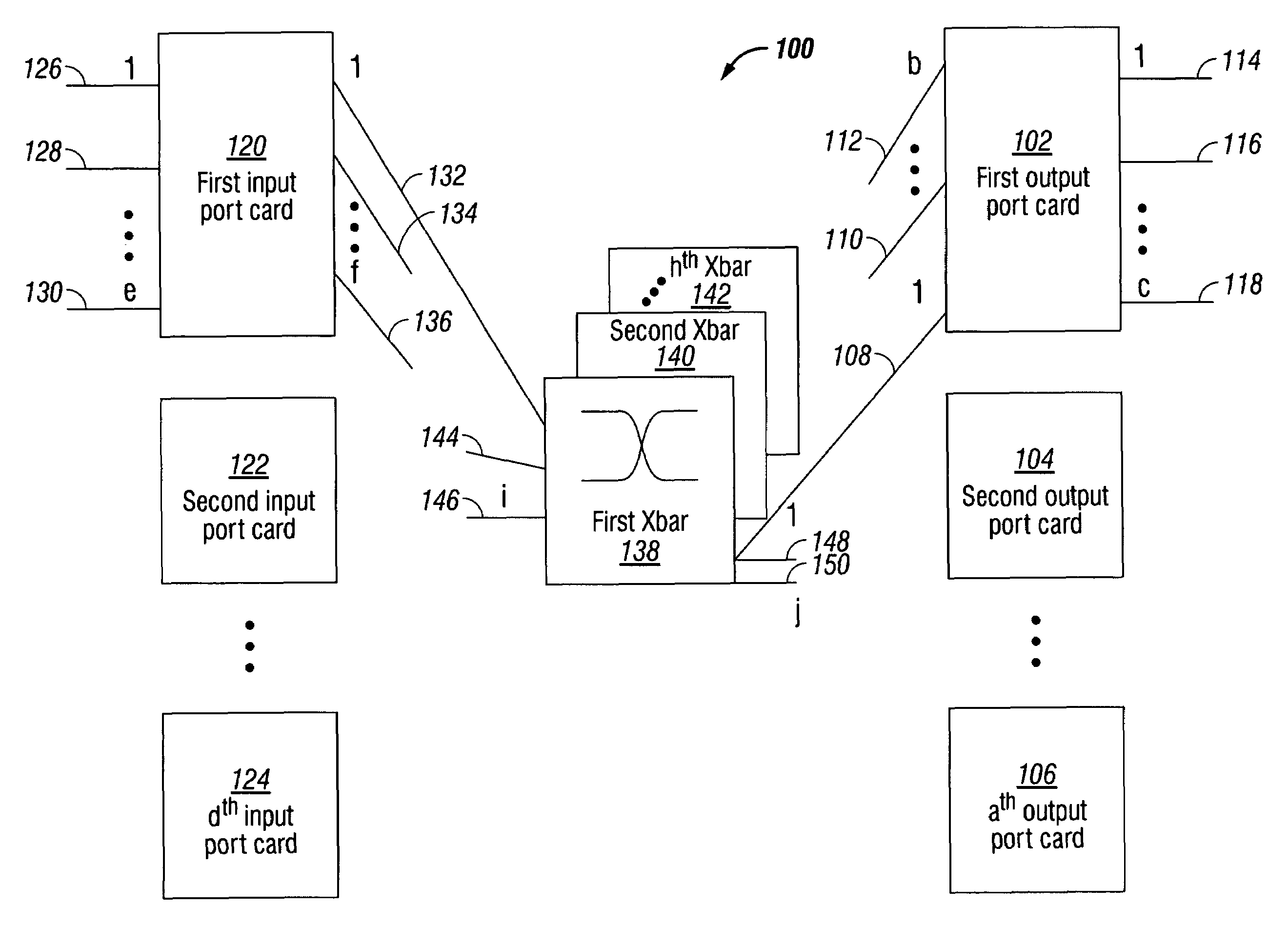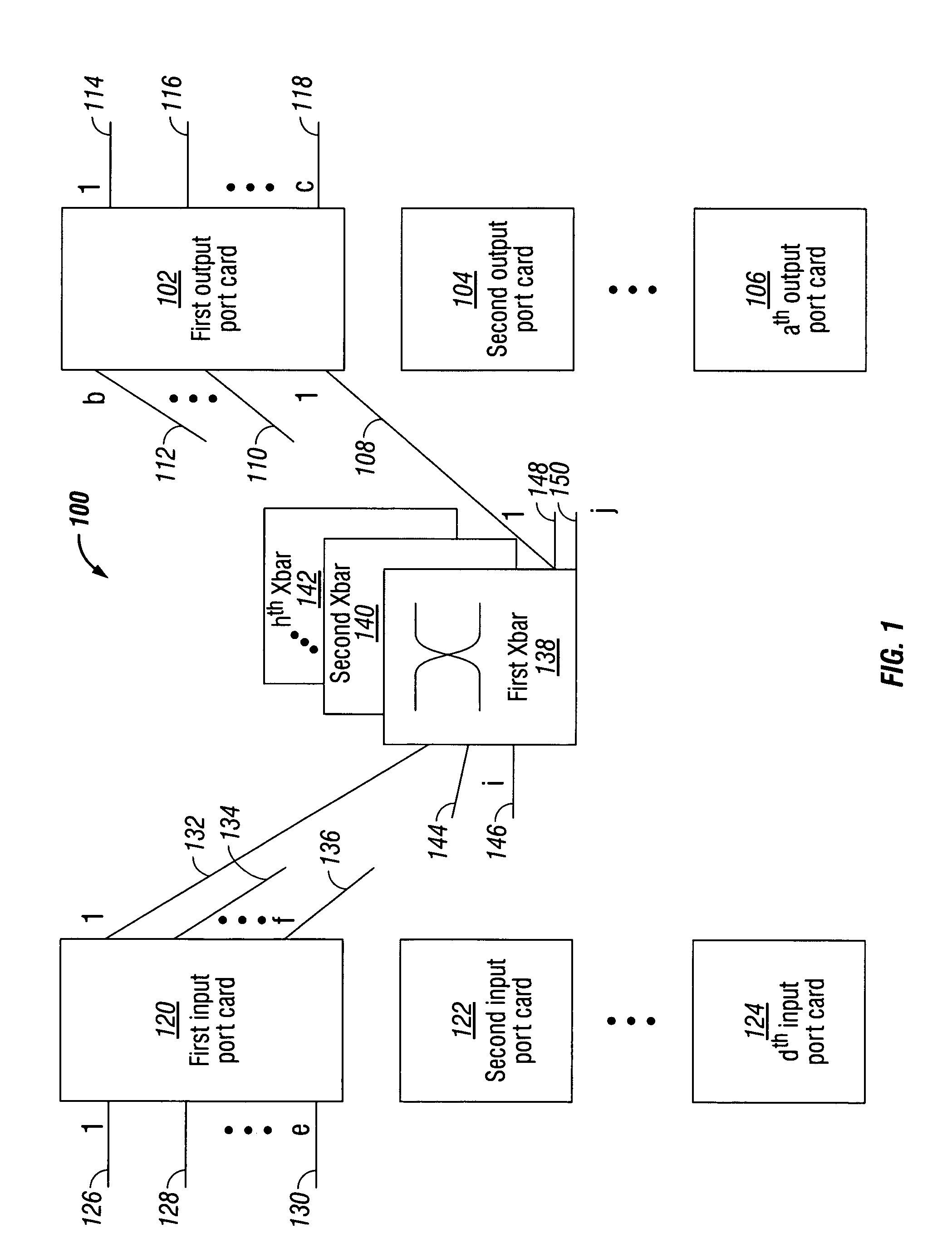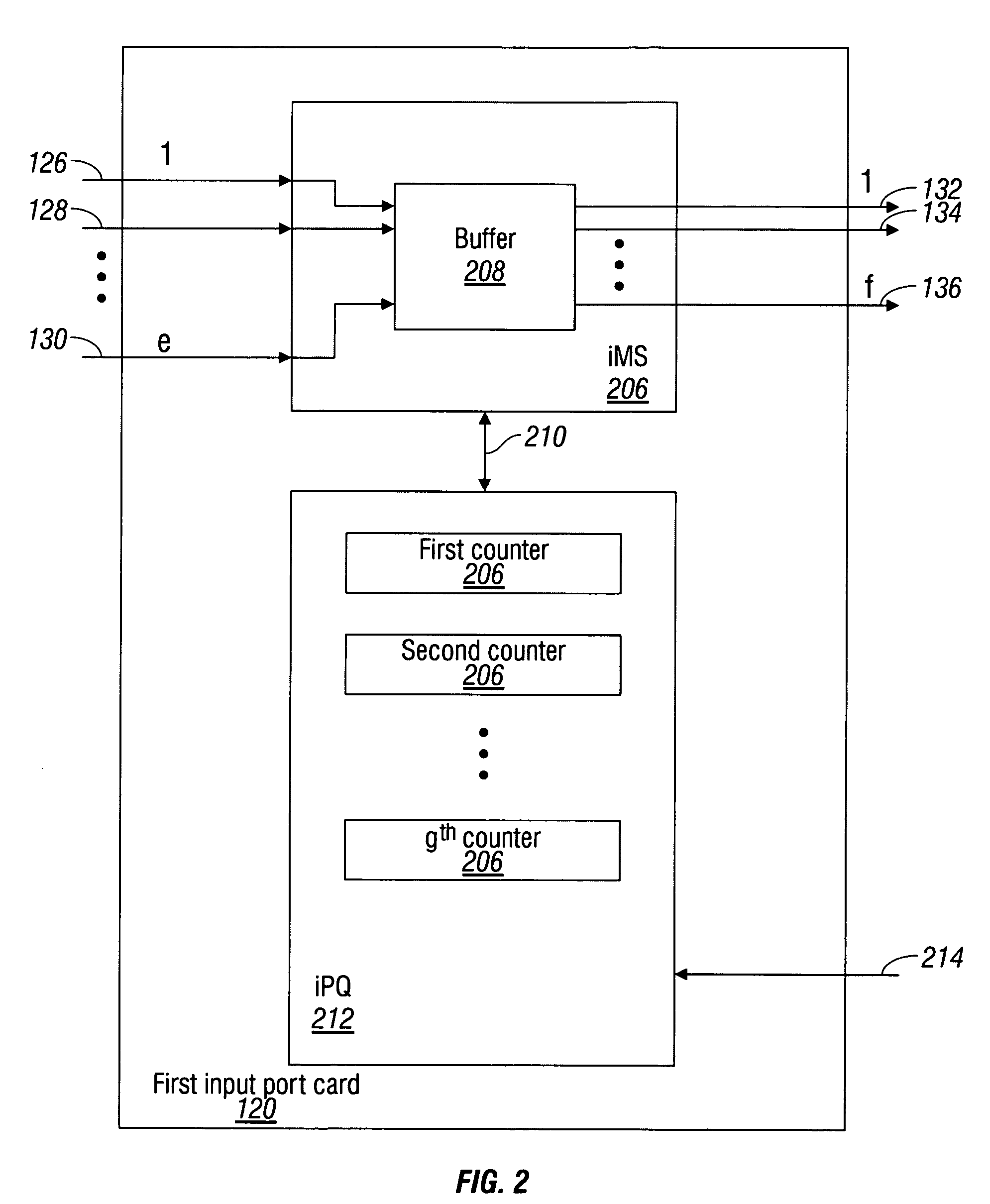Minimum latency cut-through switch fabric
a switch fabric and low latency technology, applied in the field of packet communication switching, can solve the problems of lack of flexibility, lack of available addresses, poor security features, etc., and achieve the effect of minimal latency
- Summary
- Abstract
- Description
- Claims
- Application Information
AI Technical Summary
Benefits of technology
Problems solved by technology
Method used
Image
Examples
Embodiment Construction
[0041]FIG. 1 is a schematic block diagram of the present invention system for cut-through packet routing in a packet communications switch fabric. The system 100 comprises an output port card including a plurality of egress ports. Shown are output port cards 1 through a (102, 104, 106, respectively), where the value of a is not limited to any particular value. Using the first output port card 102 as an example, a plurality of selectable backplane data links is shown. Backplane data links 1 through b are shown (108, 110, and 112, respectively), but the invention is not limited to any particular value of b. Egress ports 1 through c are shown (114, 116, and 118, respectively). Again, c is not limited to any particular value.
[0042]The system 100 also includes an input port card. Shown are input port cards 1 through d (120, 122, and 124, respectively), where the value of d is not limited to any particular value. Using first input port cards 120 as an example, a plurality of ingress ports...
PUM
 Login to View More
Login to View More Abstract
Description
Claims
Application Information
 Login to View More
Login to View More - R&D
- Intellectual Property
- Life Sciences
- Materials
- Tech Scout
- Unparalleled Data Quality
- Higher Quality Content
- 60% Fewer Hallucinations
Browse by: Latest US Patents, China's latest patents, Technical Efficacy Thesaurus, Application Domain, Technology Topic, Popular Technical Reports.
© 2025 PatSnap. All rights reserved.Legal|Privacy policy|Modern Slavery Act Transparency Statement|Sitemap|About US| Contact US: help@patsnap.com



